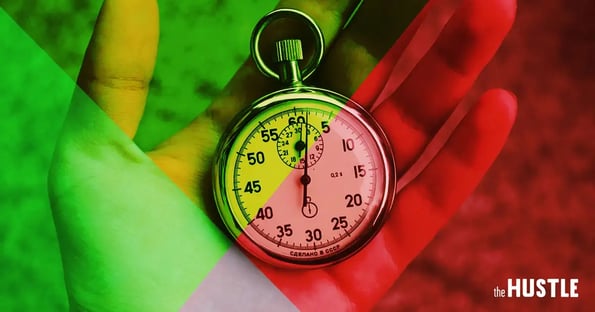“Why can’t I focus on the same task for more than five minutes?”
I keep thinking this to myself.
I’ve stared at this screen for 45 minutes, deciding what I can write that you all will want to read. I’m on a deadline. And the pressure is getting to me. So, instead of doing what I should be doing (writing something you’ll want to read and share), I’ve decided to procrastinate.
I’ve checked Facebook five times, sent six text messages, refreshed my email more than a few times, answered a couple messages on Slack, and decided that I’m going to take up woodworking in the 45 minutes since I’ve decided to procrastinate.
But alas! In my hopeless quest to avoid what I should really be doing (a hobby I know all about), I discovered a video from Google that explains the importance of schedules. According to the folks at Google, this video was inspired by a real email sent by a Google manager to her team.
The entire video can be found here, but they were kind enough to transcribe it (which I found while procrastinating on Reddit).
Read it. Right now.
Now, excuse me while I go write something that you’ll actually want.
Stop. Breathe. Now, think about how you’re managing your time. Speaking for myself, I have some room for improvement.
It’s been said there are two paradigms to scheduling — the manager and the maker. The manager’s day is cut into 30-minute intervals, and they change what they’re are doing every half hour. Sorta like Tetris — shifting blocks around and filling spaces. The maker’s day is different. They need to make, to create, to build. But, before that, they need to think. The most effective way for them to use time is in half-day or full-day blocks. Even a single 30-minute meeting in the middle of “Make Time” can be disruptive.
We all need to be makers.
Ok. Great idea. I’ll do that… you know… later… I’m late for a meeting.
No. It doesn’t work that way. The only way to make this successful is to be purposeful. Establish an implementation intention. You need to define precisely when and where you’ll reserve Make Time for your projects. Let me tell you a story about a study on this effect:
- The control group was asked to exercise once in the next week. 29% of them exercised.
- Experiment group 1 was given the same ask, along with detailed information about why exercise is important to health (i.e., “You’ll die if you don’t”.) 39% of them exercised.
- Experiment group 2 was asked to commit to exercising at a specific place, on a specific day at a specific time of their choosing. 91% of them exercised.
Commit to protecting Make Time on your calendar, including the time and place where you’ll be making, and ideally detail on what you’ll be making. That way, you know, it’ll actually happen.
So, I can just do this like… last thing on Friday, right… after all of my meetings are over?
Actually, no. Many of our meetings could be shorter or include fewer people, and some don’t need to happen at all. Take back those hours for your Make Time instead. But, don’t put it off till the end of the day on Friday — the time you choose really matters. Your energy levels run the course of a wave throughout the week, so try to plan accordingly.
Aim to do the following:
Monday: Energy ramps out of the weekend — schedule low-demand tasks like setting goals, organizing, and planning.
Tuesday, Wednesday: Peak of energy — tackle the most difficult problems, write, brainstorm, schedule your Make Time.
Thursday: Energy begins to ebb — schedule meetings, especially when consensus is needed.
Friday: Lowest energy level — do open-ended work, long-term planning, and relationship building.
Always bias your Make Time toward the morning, before you hit a cycle of afternoon decision fatigue. Hold the late afternoon for more mechanical tasks.
My new challenge to you: create and protect your Make Time, and before you “steal someone’s chair,” consider whether it’ll be disruptive to their Make Time.
I have Make Time on my calendar. Please don’t schedule over it, and I promise to do my best not to schedule over yours.
Go on and copy/paste this email and send it to your coworkers. Thank you, Google.


